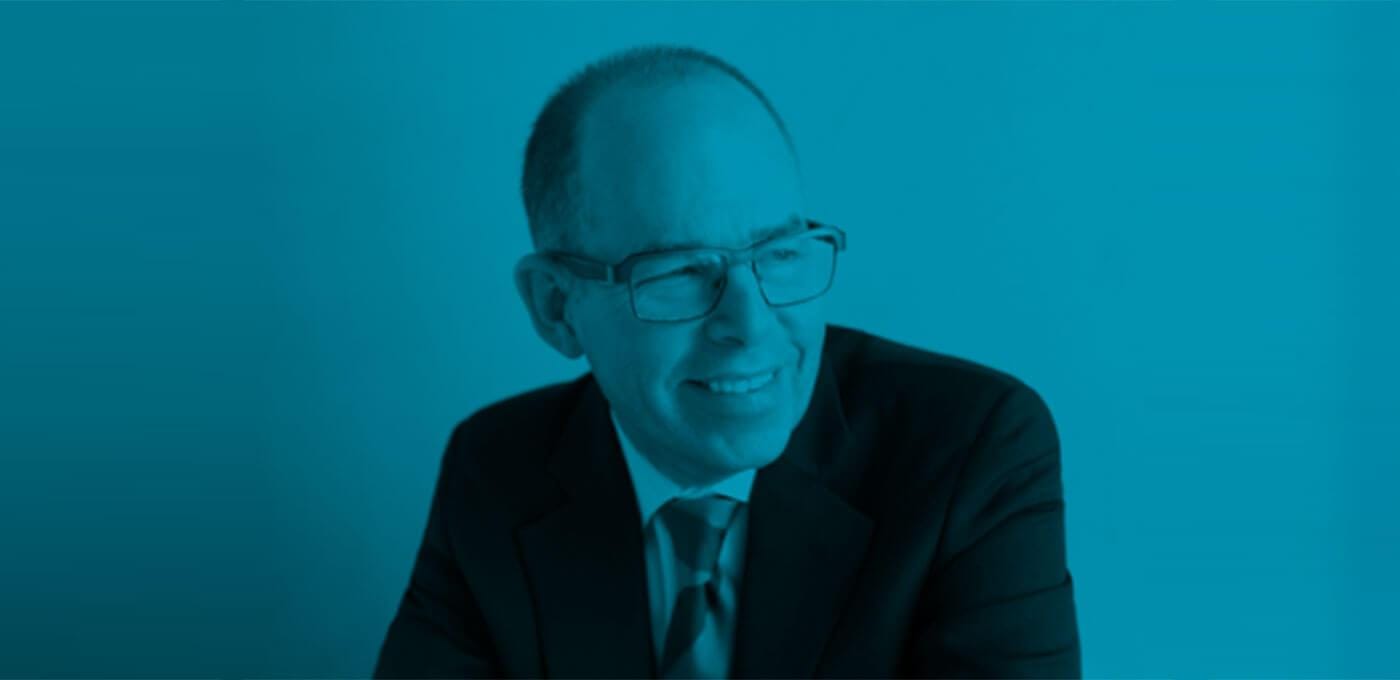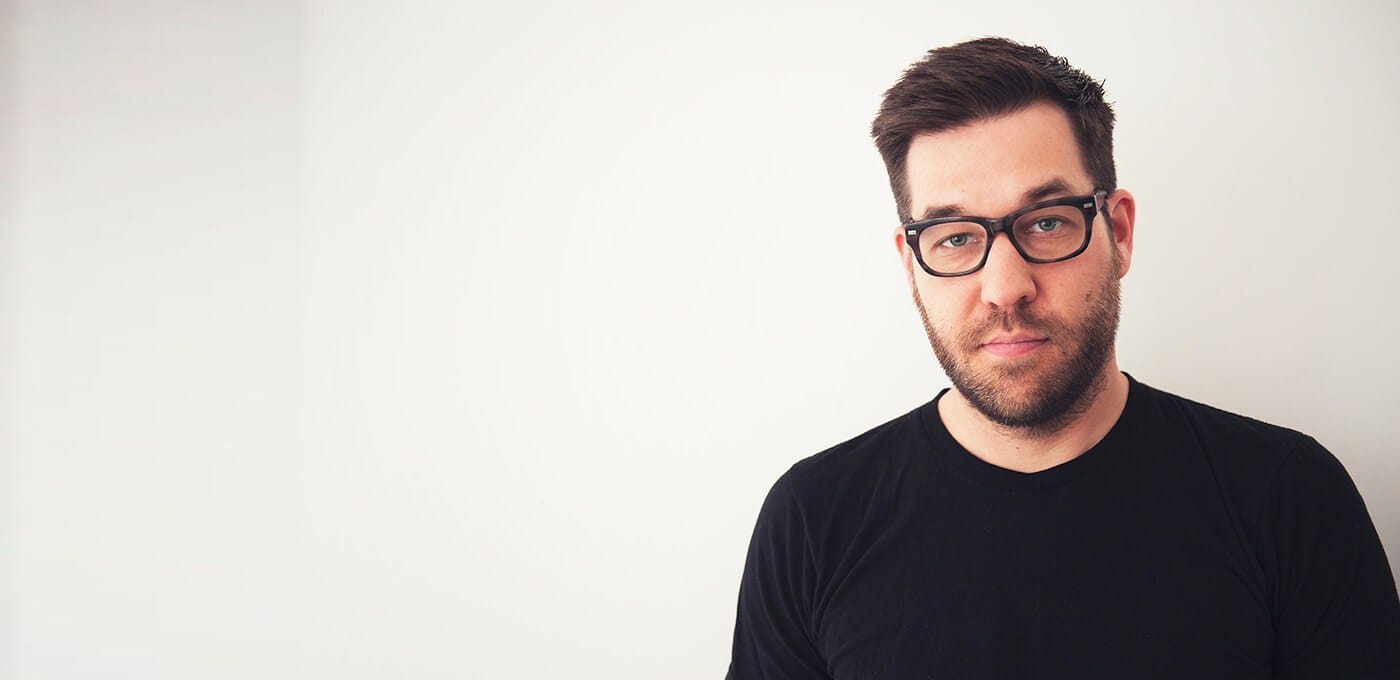Pentagram Partner Michael Bierut sits down with Metajive to discuss his design career and how he found his voice.

Before becoming a partner at Pentagram 20 years ago, Bierut apprenticed for legendary designer Massimo Vignelli. Along the way he has netted hundreds of design awards, including the prestigious AIGA medal. Meanwhile, the list of companies Bierut has worked for are as iconic and diverse as Benetton, The Library of Congress, Princeton University, The New York Jets and the Museum of Sex.
Bierut seems to have reached the helm without bringing his ego along and will be the first to admit the limitations of graphic design’s role in a brand’s success. He will also tell you that he wasn’t born with the “design voice” he is so well recognized for, and that finding it was a process in itself. Currently, Bierut is working on his first book How to use Graphic Design to Explain Things, Sell Things, Make Things Look Better, Make People Laugh, Make People Cry, and (every once in a while) Save the World which is a retrospective about both his work and process.
We sat down with the Ohio-born designer to dig deeper into his journey and were rewarded with the origin story of his own path, as well as the advice he gives the next generation of designers coming through.
—
DB: One of your first jobs was with legendary graphic designer Massimo Vignelli. What was it like working with him and his clients?
MB: When I worked for Massimo Vignelli back in the ‘80’s—which was pre-history for most working designers these days—he was very much a “I prepare the presentation, I show it to the client and the client’s job is to say ‘I love it’” designer. The idea of the client’s involvement in the design process was essentially to pick a really good designer to work with, which for his clients was him, and then do what that expert (which was always him) told you to do in the best possible way.
There are certain designers who have really clear ideas of what they want to do and what the solution is, and I have to admit I seldom have that kind of single-minded confidence, and that makes it different for me. I could never go into a meeting and say, “I have the one true perfect solution for this job.” With that method you’ve got your one arrow and they’ve got their one target and you close your eyes and you shoot it. But if it misses you can’t say, “Wait a minute, I was aiming for that tree over there,” because they can say, “No. I’ve got the target and the bull’s eye is here and you missed.”
So I go into these sorts of situations very aware of the fact that the advice that I am giving is a product of my own predilections, opinions, experience, and a certain degree of expertise, but I am just one among many kinds of designers to find a solution. And although I am trying to give them an answer to the problem, it won’t be the only one that exists out there.

THERE ARE CERTAIN DESIGNERS WHO HAVE REALLY CLEAR IDEAS OF WHAT THE SOLUTION IS AND I HAVE TO ADMIT I SELDOM HAVE THAT KIND OF SINGLE-MINDED CONFIDENCE.
DB: You just spoke at the AIGA “Y” conference. What did you talk about?
MB: I’ve been working on a book about my own work. The process of doing the book has made me think about the process of doing the design work. It’s a little bit retrospective so I thought about how the way I work has changed over the last 30 years or so.
The theme of the conference was “velocity.” When I think back to my first job we didn’t even have a fax machine. I remember working in New York and having a client in California and re-constructing in my mind how we worked with them. That’s really interesting for me! We would actually do presentations, put the whole thing together, put it in a big package and then mail that package to them which would take two or three days. Then they’d get the package, call you on the telephone and you’d talk about it (you would have made Xeroxes of what was in the package to have a record of it) and they’d give you their reaction to it.
There were nice things about it in a way, but it certainly made you think longer about what you were going to do as you were playing a very long game….You had to really be sure on what you were doing as there was no way to take it back and do something else. Of course, the down side is it makes you risk averse as you have to go with something that will work very early, as you can’t change something last minute. Now a typical day will include several revised PDFs over the course of one day.

DB: Has technology changed the client relationship?
MB: Yes. For good and for bad. It certainly makes it much harder to control the process because you don’t have any impediments to changing it over and over again, and you can get caught in cycles that are rather unfortunate. On the other hand, if you’ve got a good relationship with your client and an effortless back-and-forth of input and iteration that makes it really great. I’ve made it my goal in life to just have clients that I like working with. That’s all I want!
DB: The role of “brand designer” has evolved over the years. How has this shifting role affected you?
MB: The thing that brands are asking us to do is only a small part, and maybe the least important part, of what their audience will experience about what they do. I have to admit I don’t like working on projects where I sense that the cosmetic side of design is meant to be the main differentiator.
I DON’T LIKE WORKING ON PROJECTS WHERE I SENSE THAT THE COSMETIC SIDE OF DESIGN IS MEANT TO BE THE MAIN DIFFERENTIATOR. MY DESIGN WORK ISN’T INTERESTING ENOUGH TO DIFFERENTIATE SOMETHING THAT’S NOT INTERESTING OTHERWISE. I LOOK FOR THINGS THAT ARE FULL OF INTEREST AND THAT I AM INTERESTED IN, WHERE I CAN REALLY SEE THE RAISON D’ETRE AND THE NEED THAT THEY ARE FULFILLING IN THE WORLD. IF YOU REALLY GET ALL THAT, THEN YOU CAN CALIBRATE WHAT THE APPROPRIATE RESPONSE IS DESIGN-WISE.
I am not one of those designers who are eager to expand the role of a graphic designer. I’m a graphic designer. I know I’m good at that. I’m not an expert about customer service. I’m not an expert about coming up with the valuation of an IPO. If someone comes to me and has a shitty product, I will say tell them upfront that I don’t know why people would use this and that, to me, it doesn’t make sense, and I’m not sure a logo is what they need right now. But I’m not someone who is dying to have a seat at the table and have input earlier in the process; I’m surrounded by people who have goddamn opinions about things they don’t know anything about, and I don’t want to be one of those people. Sorry if that sounds like bad advice for students who should be expanding their horizons, but I think that everyone should work out what they are good at and do that thing.
DB: As a partner at Pentagram can you provide insight into the long term success of the agency?
MB: Pentagram has a unique structure that is dead simple, but no one has ever really copied it. It’s based on a couple of principles; one being the conviction that the best design is done in small groups with one person as the lead, who has the experience and confidence to lead the relationship with the client. Each partner (out of 19) hand-picks a team with autonomy. I have a dozen people work for me. There are partners with four people. There is no glory to having big teams. We have no interest in size for its own sake. The other principle is that within those teams we don’t really have a hierarchy, just the partner and the team.
I’M SURROUNDED BY PEOPLE WHO HAVE GODDAMN OPINIONS ABOUT THINGS THEY DON’T KNOW ANYTHING ABOUT AND I DON’T WANT TO BE ONE OF THOSE PEOPLE.
DB: With a focus on small teams what steps are taken to keep each team happy and successful?
MB: It’s really simple. My designers have one job: to make me happy! And I have one job: to make sure my designers are satisfied, and not being driven crazy by myself or the clients.
DB: How have you and Pentagram adjusted over the last 25 years from producing annual reports to working within a digital design world?
MB: When annual reports were a big thing, I’m not sure we were that excited about designing annual reports, and I’m not sure we are now that excited about designing websites and apps! Even when we have partners who come in with really strong “new media” backgrounds, it’s funny how much they resist being thought of as the interactive partner.
DB: What are some of the highlight projects you’ve had the opportunity to work on over your career?
MB: This gets personal, but in terms of finding a voice, which I think is one of the things that loom in every designer’s sensibility, you have to make a lot of choices that are really subjective.
I worked for Massimo Vignelli for 10 years and he had a really strong, identifiable aesthetic that I happened to like and respect and was able to master, and I enjoyed working within that aesthetic. But I have to admit, I never thought that aesthetic had some sort of inherent superiority against any other kind of perspective points of view on aesthetic, and I knew that Massimo’s aesthetic wasn’t exactly the same as mine. However, you work for someone for 10 years and you start to wonder, “What the hell is my personal aesthetic?!” So when I started working for Pentagram one of the things I had in my mind was that now I could do anything—I could use whatever typeface and color I wanted! I remember being baffled about how you made those choices and feeling helpless in the face of it.
You flail around until you hit a landing, and then your feet are really secure. The work we did for Saks Fifth Avenue about 10 years ago was another one of those experiences, and then the work we just did for MIT Media Lab would be another one like that. Each of them had periods where I really couldn’t figure out what to do,and had times where I was sort of volunteering to be fired from it. I was having so much trouble trying to sort out the solution.
YOU WORK FOR SOMEONE FOR 10 YEARS AND YOU START TO WONDER, “WHAT THE HELL IS MY PERSONAL AESTHETIC?!”
DB: What advice do you have for the emerging designer?
MB: What I didn’t get when I was a student, and what took me a long time to get but really sustains me now, is that if you are a designer, and specifically a graphic designer, it’s this free pass to go anywhere you want to go. Meaning, I don’t know anything about cooking but I’ve been in the back of restaurants because I am designing for them, and I couldn’t play professional football but I’ve been in a lot of professional football teams locker rooms. I’ve been in the room where they plan the front page of the New York Times, backstage at performances, etc. I really do need to be in that room to do my job properly. The work I have been really proud of is all stuff that I was really interested in. If you can be interested in as many things as possible, it will up your percentage.
Some people kind of go deep into one thing, but I’m not like that, I go the other way. I have learned a little bit about so many things, that the advice I give to students is that all the technical things they have to learn about are really important, but also important is this: What is the content of what you are working on and why is anybody in the real world supposed to give a damn about it?
What will really make you a good designer is being interested in, and if you are really lucky, passionate about, the stuff you are working on. And what I’ve noticed is that good designers can get excited about a lot of things. If you just keep doing good work the cool jobs will come along one way or another.

